Unlike Bran, the Râșnov Fortress had many buildings, including houses, a school, a chapel… unlike Peleş, a royal residence, Râșnov Fortress is known as “the peasant Citadel Râşnov”. Looking back in time we’ve realized that Râșnov Fortress is a perfect example of a medieval fortress built on an abrupt cliff, with walls five meters tall, eight bastions, a strongly fortified entrance. My middle-schooler noticed the motte-and-bailey structure and guessed that in the bailey there would be houses of the people living there… she was right! Let’s see what other medieval features we can find in this medieval citadel!
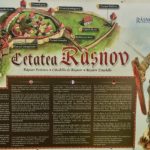 The last archeological researches, which date back from 2010, seem to confirm the existence of a Dacian settlement mentioned among the “bright cities of Dacia” by the geographer Claudius Ptolemeu from Egypt’s Alexandria.
The last archeological researches, which date back from 2010, seem to confirm the existence of a Dacian settlement mentioned among the “bright cities of Dacia” by the geographer Claudius Ptolemeu from Egypt’s Alexandria.
What was its name? Due to the construction technique, the arming of the corners and the bigger openings, IT can be dated back from the first half of the XV century. In the XVI century, a third defense level was built, without fire holes in the upper level, which was guaranteeing a high visibility for archers. After the siege of Gabriel Báthory from 1612, IT was partially devastated by the enemy’s cannon balls, and then IT was abandoned.
Due to the construction technique, the arming of the corners and the bigger openings, IT can be dated back from the first half of the XV century. In the XVI century, a third defense level was built, without fire holes in the upper level, which was guaranteeing a high visibility for archers. After the siege of Gabriel Báthory from 1612, IT was partially devastated by the enemy’s cannon balls, and then IT was abandoned. 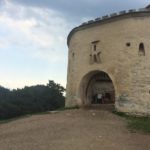 IT is a semicircular, fortified, uncovered construction, with numerous fire holes, and a defense watching road. IT was built in the XVI century, in front of the Weapons Tower, and IT has a defensive role. Under the pulling up bridge can be found a ”wolf mouth” trap, a trap built from a hole with sharp ended thick sticks made of wood or iron.
IT is a semicircular, fortified, uncovered construction, with numerous fire holes, and a defense watching road. IT was built in the XVI century, in front of the Weapons Tower, and IT has a defensive role. Under the pulling up bridge can be found a ”wolf mouth” trap, a trap built from a hole with sharp ended thick sticks made of wood or iron. 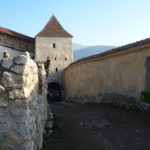 Located behind the Eastern Barbican, IT was built before the XV century. IT is similar to the Báthory Tower due to its massiveness, the number of floors, and the construction materials. The ”wolf mouth” trap can be located on ITs base.
Located behind the Eastern Barbican, IT was built before the XV century. IT is similar to the Báthory Tower due to its massiveness, the number of floors, and the construction materials. The ”wolf mouth” trap can be located on ITs base.
How many towers can you spot?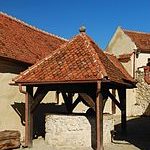 IT was delved in 1623 – 1640, with a depth of 76 fathoms, meaning 146 meters. It has been used until 1850. The water was full of limestone, and it has been used only for animals and washing, and only in extreme cases for drinking.
IT was delved in 1623 – 1640, with a depth of 76 fathoms, meaning 146 meters. It has been used until 1850. The water was full of limestone, and it has been used only for animals and washing, and only in extreme cases for drinking. 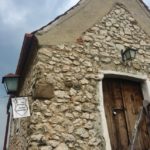 IT was built in the XVI century. IT had two classrooms, one at the first floor, and one at the second one. One classroom was fitting only six or seven students, with different ages. They were taught how to read, write, and speak the Romanian language.
IT was built in the XVI century. IT had two classrooms, one at the first floor, and one at the second one. One classroom was fitting only six or seven students, with different ages. They were taught how to read, write, and speak the Romanian language.
ANSWERS
- COMIDAVA
- BÁTHORY TOWER
- THE EASTERN BARBICAN
- THE WEAPONS TOWER
- THE WELL
- THE SCHOOL
Latinized, the toponym has become “Cumidava”, and under this name it appears on a monument which dates back from the time of the Roman emperor Alexander Severus (222 – 235 B.C.).
Stylistically, the tower can be included in the category of the medieval fortifications built before the development of artillery.
The main entrance in the interior yard of the citadel is preceded by the Eastern Barbican, also known as the Big Barbican.
Báthory Tower, Weapons Tower, Axle Edged Tower, Gothic Tower, Triangular Tower, Guard’s Tower
Despite the legend of the fountain delved by two Turkish prisoners, who have been promised the freedom when the work has been done, the fountain was actually completed by German masters hired by the mayor of Râşnov.
The teacher was also the priest in the settlement, who was Evangelic.
PHOTOS: 2017.06.23.Râșnov
REFERENCES
TRIPS
VIDEOS
